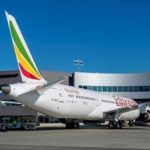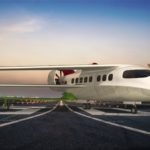PAL-V has teamed up with engineering and environmental consulting firm Antea to help local governments plan for intra-city mobility.
At the Geneva International Motor Show, PAL-V signed an MOU with Antea Group.
Together, the partners will support local governments to prepare and implement the next steps in flying mobility: in this case, planning and designing additional small airstrips where the PAL-V can land.
Antea Group specialises in urban planning and infrastructure and has offices in Europe, North and South America, Africa and Asia.
The next step in mobility
“Although there is already abundant infrastructure to support the PAL-V, with this partnership we can now assist additional cities to prepare for the next step in mobility and even further increase the efficiency of the PAL-V,” said Robert Dingemanse, CEO for PAL-V.
City-to-city first
In 2050, 68 per cent of people will live in urban areas, according to the United Nations (UN).
“Offering these cities [the ability to] prepare a landing strip for the PAL-V allows people to travel more easily to and from the city. People could even live further away from the city while keeping the same commute time,” said Henri Deelstra from Antea Group.
PAL-V says it sees the city-to-city mobility market as the priority – rather than inner-city services – because there is no need for additional infrastructure to support a vehicle like the PAL-V.
The PAL-V runs on regular car fuel and people can park it in their own garage so there is no need for a hangar or fuel station at the airstrip.
The PAL-V only needs a grass strip to land or take-off and these, PAL-V says, are “abundantly available and often can be created easily”.
Challenges to urban air mobility
The company said: “We are convinced that there will be a market for urban mobility. However, not for the coming decade. There are some major challenges that need to be addressed. One of them is the noise that aircraft make.
“The PAL-V is relatively quiet compared to helicopters but it still produces propeller noise. Although you might think that electric engines would resolve that issue, [they don’t]. The main source of the noise pollution comes from the blades of the rotor and propeller, especially when using drone or helicopter technology.
“The other challenge is the level of safety required to fly over urban areas.”
The statement added: “[In addition], new regulations have to be in place and the infrastructure needs to be created in the form of vertiports and traffic management.”

